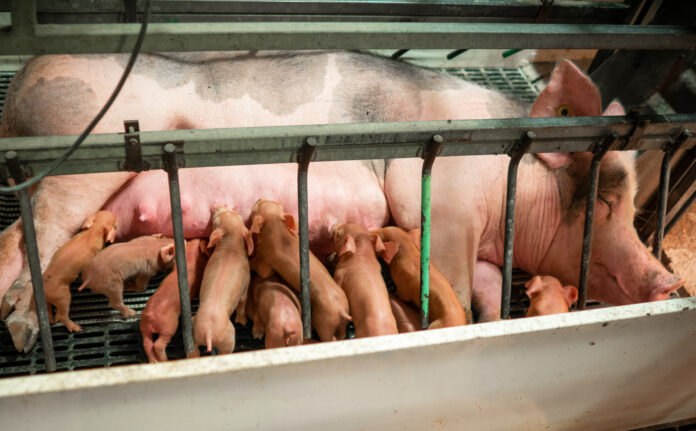By Chantal Farmer
Editor’s note: Chantal Farmer is a research scientist at Agriculture and Agri-Food Canada’s (AAFC) Sherbrooke Research and Development Centre. She can be contacted at chantal.farmer@agr.gc.ca.

Without nutritional approaches to benefit performance, sows do not produce enough milk to sustain optimal growth of their litters. This is especially challenging considering the advances in genetic lines to produce litters of greater size than ever before. This situation presents a major problem for the hog industry, making it imperative to develop strategies to increase the amount of milk available to suckling piglets.
Lysine is the first limiting amino acid in most swine diets, and it is most important during late gestation when the majority of fetal and mammary growth occurs. ‘Mammogenesis’ refers to the process during which pigs grow milk-synthesizing tissue. During this critical period of time, however, it is not known which specific amino acids are required to fully support this essential process. Recently, a project was carried out at Agriculture and Agri-Food Canada’s (AAFC) Sherbrooke Research and Development Centre to determine the impact of a 40 per cent increase in lysine intake from days 90 to 110 of gestation in gilts on their mammary development.
Milk-synthesizing tissue matters for sow milk yield

The number of mammary cells present at the onset of lactation is considered the main factor for determining sow milk yield potential (Figure 1). Rapid mammary development occurs at three distinctive periods in the life of a pig, and it is only during these periods that it is possible to stimulate mammary growth using nutritional or other strategies.
The first period of rapid mammary development takes place before puberty, starting at approximately 90 days of age. The second period is during late gestation (from 90 days of gestation to farrowing), while the last period occurs in lactation. Nutrition in late gestation holds much promise to increase the number of milk-synthesizing cells before lactation starts.
More lysine potentially means more milk

To test the impact of lysine during late gestation, gilts were fed 2.65 kilograms of either a conventional diet providing 18.6 grams per day of standardized ileal digestible (SID) lysine, or a diet providing 26 grams per day of SID lysine with the inclusion of additional soybean meal. Both diets provided the same amount of energy.
Feeding 26 grams per day of SID lysine increased the weight of milk-synthesizing mammary tissue by 44 per cent, whereas the weight of the outside fat layer of the mammary tissue was not altered (Table 1). The composition of the mammary tissue was generally not affected by dietary treatment; however, greater total amounts of each tissue component, such as protein and fat, were present due to the heavier tissue weight.
These findings suggest that a greater uptake of lysine in supplemented sows supports enhanced growth of milk-synthesizing tissue. It is worth noting that the beneficial effects of added soybean meal could be due to an increased protein content or to greater concentrations of amino acids other than lysine.
What the data suggest is that increasing lysine by 40 per cent from gestation day 90 onward, as part of a two-phase feeding strategy, could benefit potential sow milk yield during lactation.
Current recommendations not enough
The results of this study indicate that the current recommendations for including lysine during late pregnancy in pig diets are under-estimated. By providing 40 per cent more dietary lysine, with added soybean meal, producers can effectively stimulate the growth of milk-synthesizing tissue, leading to better milk production in their sows, for the benefit of today’s large piglet litters.






